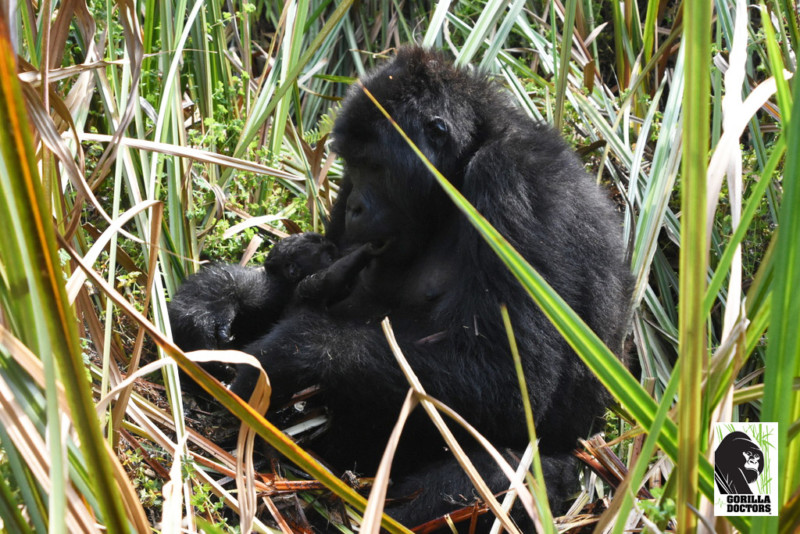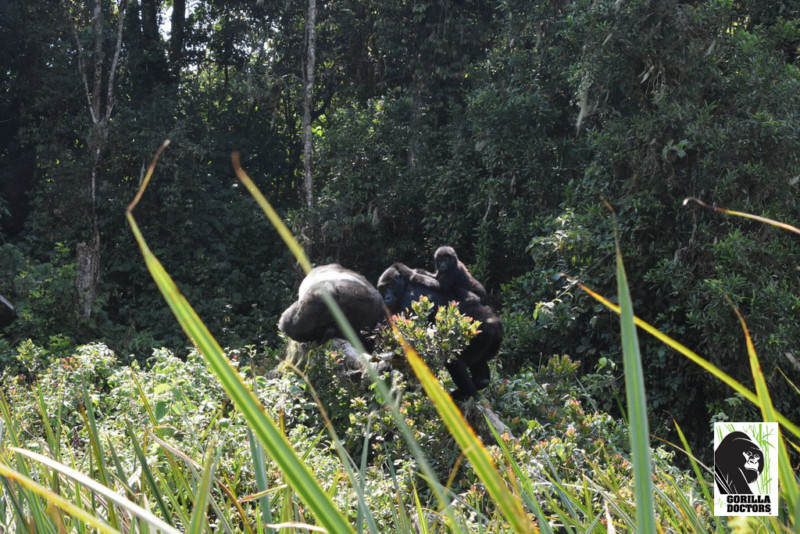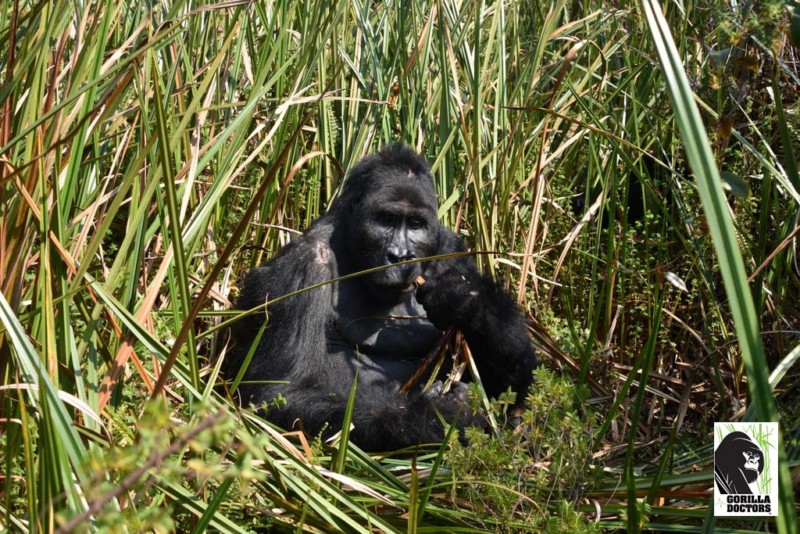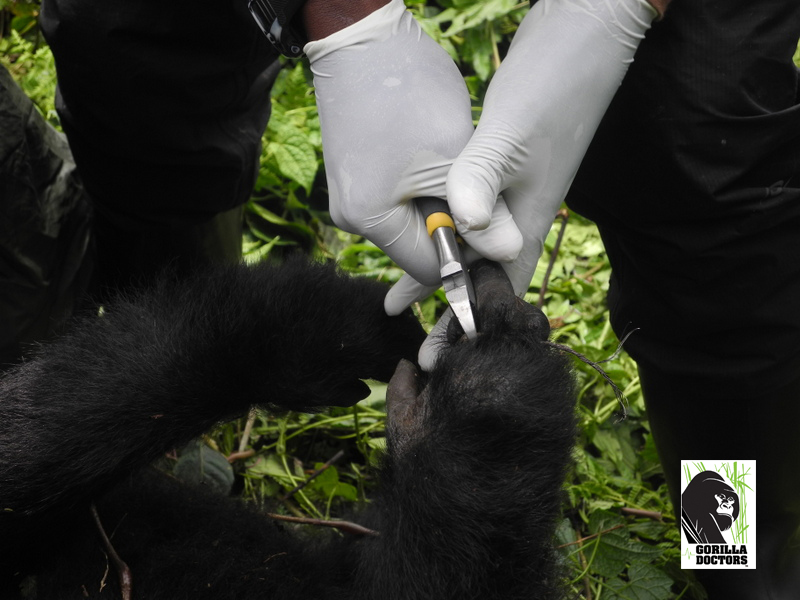Gorilla Doctors impact on Grauer’s Gorillas: Iragi’s new baby
By Gorilla Doctors Staff on Monday, July 1st, 2019 in Blog.On June 18th Gorilla Doctor Martin Kabuyaya conducted a routine health check of the Grauer’s gorilla group, Bonane, led by the silverback of same name in Kahuzi-Biega National Park, DRC. Normally you’ll find updates from our routine health checks on social media but we felt this report warranted special attention as it highlights the long-term impacts of our work.
Given that Grauer’s are critically endangered (77% decline over the last 20 years) as a result of war, insecurity, poaching and the trade of conflict minerals, every individual is critical in trying to reverse this decline. So, we are happy to report that adult female Iragi gave birth on May 23rd – but this is no ordinary infant and Iragi is no ordinary female…
Summary of Bonane group Health Check
Dr. Martin reported that all members of the group were healthy, active and feeding in the swamps. Silverback Bonane had recently been in a fight with another silverback and sustained some bite wounds but they were clean, uninfected and healing. Bonane group currently has eight (8) individuals – silverback Bonane, three (3) adult females that are habituated and one (1) adult female that is ‘wild’ plus three (3) infants. Iragi’s infant is the newest addition to the group.
The ‘Lucky’ Story of Iragi
The birth of Iragi’s baby is especially meaningful to us at Gorilla Doctors. When Iragi was a juvenile Dr. Eddy performed an intervention to remove a snare from her right hand.
In the early morning of January 29, 2013, Dr. Eddy and team trekked into Kahuzi-Biega National Park and found Iragi resting next to the silverback with a wire wrapped tightly around her stiff and swollen fingers. Thanks to the fast action of the park rangers alerting Gorilla Doctors and Dr. Eddy’s immediate response, the snare had not yet broken through the skin. Dr. Eddy was able to anesthetize Iragi and remove the snare despite aggression from the silverback.
Over the last six years, Iragi has grown into a healthy adult female, transferred to Bonane group and has now become a mother with full use of both hands. And to top it all off…her name, Iragi, means ‘Lucky’ in Congolese.
A Note from our Executive Director, Dr. Kirsten Gilardi
With only 3,800 Grauer’s remaining, knowing that Iragi’s baby was possible, in part, from our medical intervention in 2013 is why we do our work, and a great example how this kind of ‘extreme’ conservation can have a tangible, multi-generational impact. As many of you already know, our work has had a significant impact on the recovery of mountain gorillas, with Gorilla Doctors being credited for half of the annual population growth rate in habituated mountain gorillas.
The majority of Grauer’s gorillas, however, are unhabituated to humans, making hands-on medical care nearly impossible (because trackers and our veterinarians can’t get close enough to notice when gorillas are ill or injured, and to administer treatments). Thanks to a grant from National Geographic and our generous donors, Dr. Eddy is leading a project to develop a non-invasive health monitoring program for unhabituated Grauer’s gorillas. These protocols will allow us to build a more detailed understanding of health threats to Grauer’s gorillas. Ultimately, we will then be able to develop health monitoring and veterinary care protocols for the broader Grauer’s population across multiple sites. Gorilla Doctors is the only organization monitoring the health of wild Grauer’s gorillas and your support helps us continue and expand this effort.
Stay up to date on our Routine Health Checks of all the mountain and Grauer’s gorillas we monitor in Rwanda, Uganda and DRC by following us on Facebook, Instagram and Twitter.


 Donate
Donate



